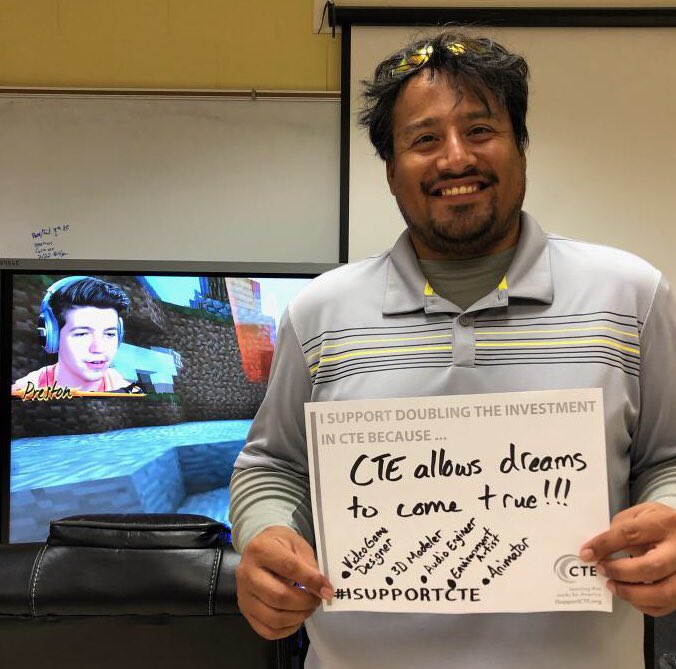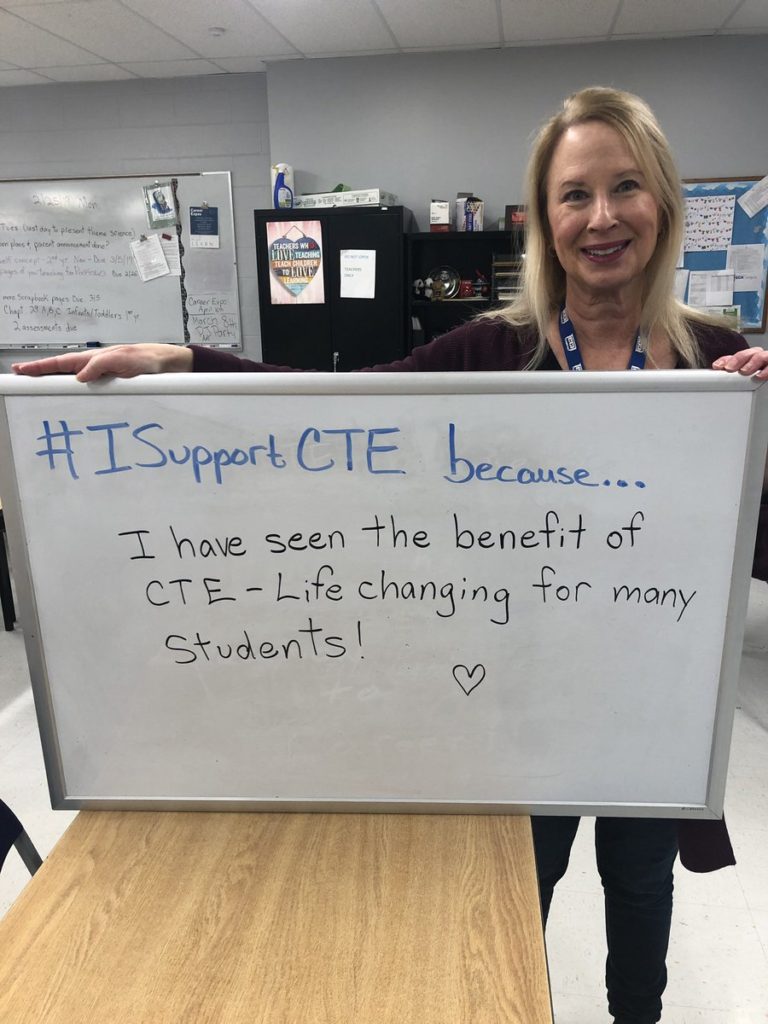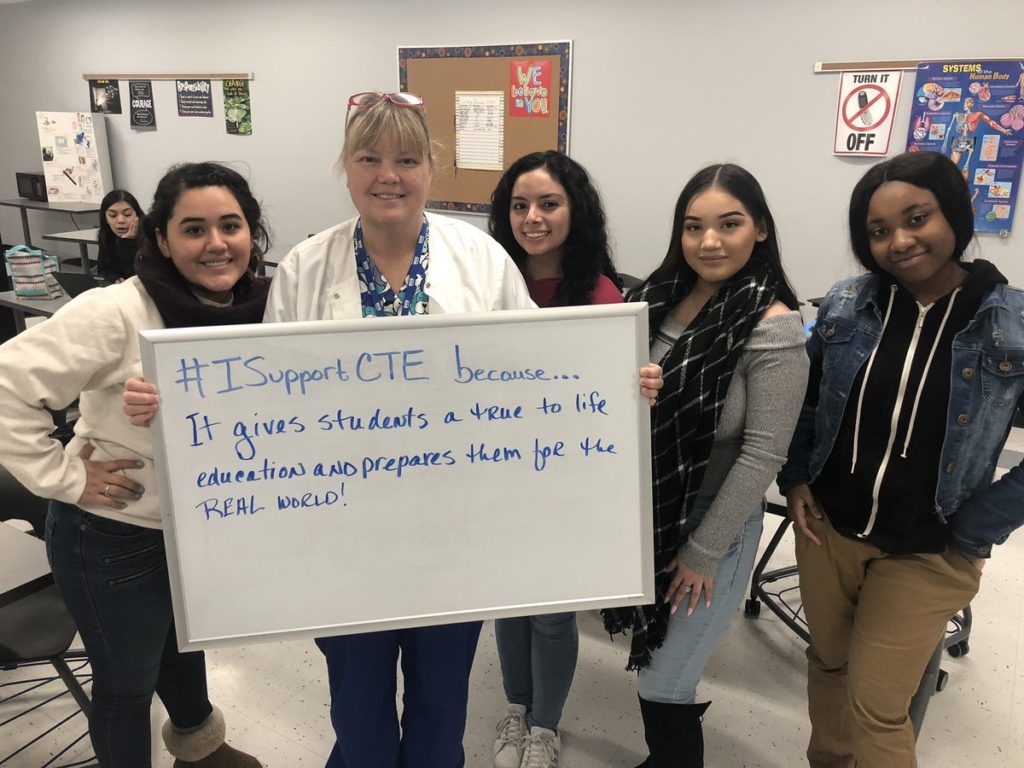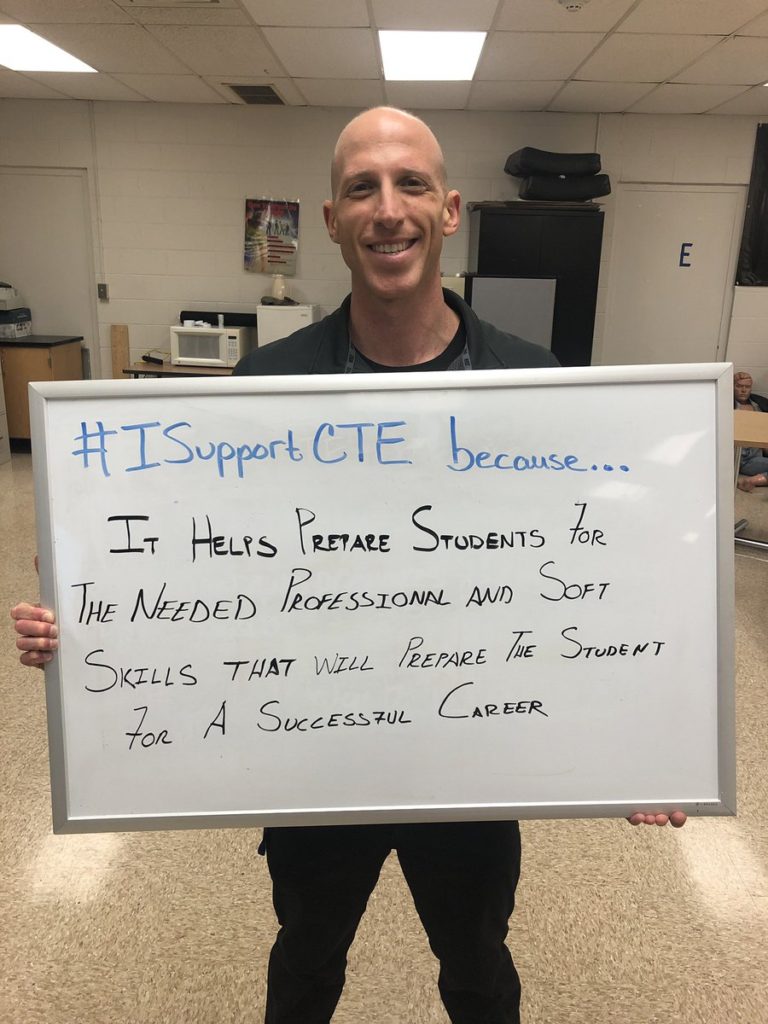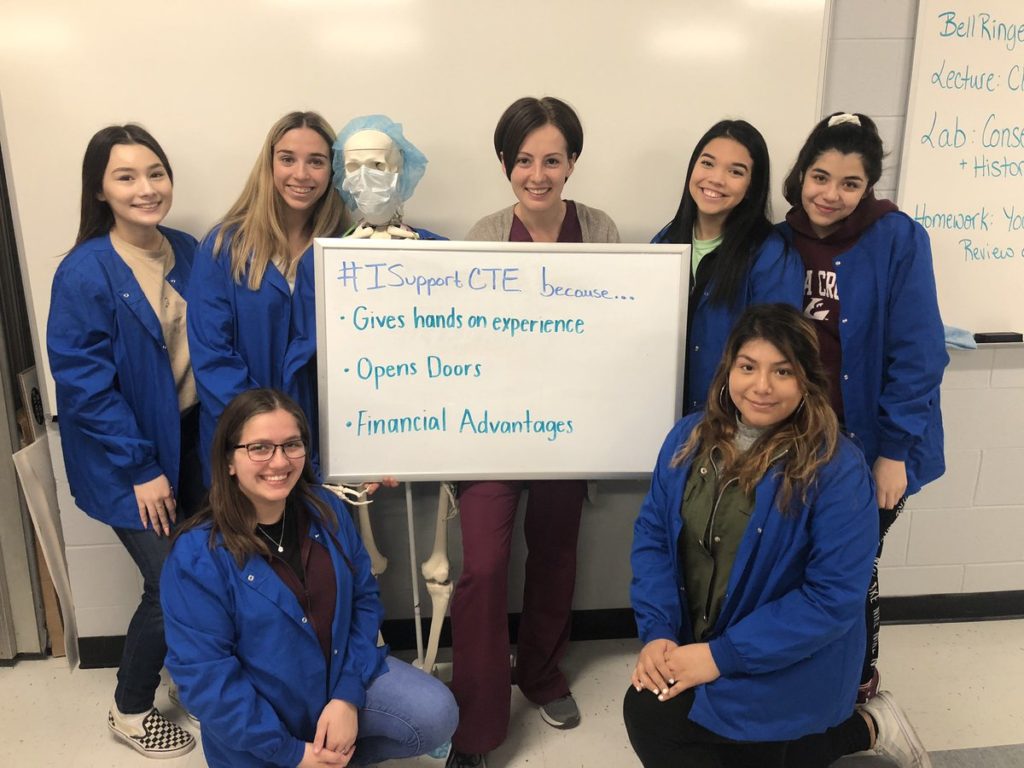With Career Technical Education (CTE) month having come to a close, this update includes how CTE month was recognized, next steps for Higher Education Act (HEA) reauthorization, questions about supplement not supplant under the Every Student Succeeds Act (ESSA), the first education bill of the 116th Congress, renewal of Second Chance Pell and the new American Workforce Policy Advisory Board.
Senate Passes CTE Month Resolution
The Senate passed a resolution to officially recognize February as CTE month. Introduced by Senator Tim Kaine (D-VA) and the Senate CTE Caucus co-chairs, S. Res. 79 was co-sponsored by 50 senators across both parties. A resolution, H. Res. 119, was also introduced in the House by House CTE Caucus co-chair Representative Jim Langevin (D-RI), and co-sponsored by 46 representatives across both parties.
Secretary DeVos Joins CTE Month School Visit
In recognition of CTE month, U.S. Secretary of Education Betsy DeVos joined the Association for Career and Technical Education (ACTE) for a site visit to the Academies of Loudoun in Leesburg, Virginia. During the visit, Secretary DeVos learned more about the school’s innovative CTE programs and toured the radiology technology lab, auto service technology lab, auto collision repair lab, makerspace, engineering research lab and greenhouse. Secretary DeVos also participated in a roundtable conversation along with Academies of Loudon’s Principal Tinell Priddy, Assistant Superintendent for Instruction Ashley Ellis, ACTE’s Steve DeWitt and Advance CTE’s Kimberly Green.
Senator Murray’s Vision for Reauthorization of the Higher Education Act
On Thursday, February 28, Ranking Member of the Senate Committee on Health, Education, Labor and Pensions Patty Murray (D-WA) spoke about HEA reauthorization at the Center for American Progress. Senator Murray outlined the four following priorities: 1) Improving college affordability; 2) Holding schools accountable; 3) Expanding access to higher education and 3) Increasing campus safety and protecting students’ civil rights. Senator Murray voiced that reauthorization is an opportunity for comprehensive higher education reform, and has been in negotiations with Senate Health, Education, Labor and Pensions Committee Chairman, Senator Lamar Alexander (R-TN).
Committee on Education & Labor Announces Five Hearings on Higher Education
Chairman of the Committee on Education and Labor, Representative Bobby Scott (D-VA) and Ranking Member Virginia Foxx (R-NC) announced five upcoming bipartisan hearings on higher education. The hearings will cover: 1) The Cost of College: Student Centered Reforms to Bring Higher Education Within Reach; 2) Strengthening Accountability in Higher Education to Better Serve Students and Taxpayers; 3) The Cost of Non-Completion: Improving Student Outcomes in Higher Education; 4) Engines of Economic Mobility: The Critical Role of Community Colleges, Historically Black Colleges and Universities, and Minority-Serving Institutions in Preparing Students for Success and 5) Innovation to Improve Equity: Exploring High-Quality Pathways to a College Degree. No dates for the hearings have been announced yet.
Democratic Congressional Leaders Respond to Education Department’s Proposed ESSA Title I Guidelines
Representative Scott and Senator Murray responded to the Education Department’s proposed guidance on the supplement not supplant requirement under Title I of the Every Student Succeeds Act. The proposed guidance alters the methodology for accountability around supplement not supplant funding. School districts would need to demonstrate that a school’s Title I status was not considered when designating state and local resources to each school. Representative Scott and Senator Murray called on Secretary DeVos to carry out a negotiated rulemaking process instead of moving forward with this proposal.
House Committee on Education & Labor Votes on Rebuild America’s Schools Act
The first education bill of the year, the Rebuild America’s Schools Act, was cleared to go to the full House of Representatives in a 26-20 vote in the House Committee on Education & Labor. This bill would provide $100 billion in grants and tax-credit bonds for school infrastructure. CTE is incorporated in this bill as an allowable use of funds.
U.S. Department of Education Renews Pilot Pell Grants Program
On February 13 the U.S. Department of Education approved renewal of a pilot program started by the Obama administration that allows incarcerated individuals to access Pell Grants. The program, called Second Chance Pell, is in its fourth year. Through this program, and the 67 participating colleges and universities and over 100 federal and state penal institutions, 12,000 incarcerated learners are able to utilize Pell. The creation of this pilot was the first time that prisoners were able to access Pell since Congress banned this in 1994. Currently, Secretary Betsy DeVos has voiced an interest in lifting this ban. Senator Alexander and Representative Scott have both recently spoken out in support of lifting this ban through reauthorization of the Higher Education Act.
Administration Creates American Workforce Policy Advisory Board
On February 13 the U.S. Secretary of Commerce, Wilbur Ross and Ivanka Trump, adviser to President Trump, announced a new American Workforce Policy Advisory Board. The new advisory board is comprised of 25 members, including the chief executives of Apple Inc., Lockheed Martin Corp., Siemens USA and Walmart. The advisory board is separate of the National Council for the American Worker, which was established by Executive Order in June 2018, but the two groups will work together. One example noted was that the advisory board would be “be asked to help the council develop a national campaign to promote education and training, recommend ways to improve labor market data, increase private sector investments in job learning and better identify companies’ needs in hiring.” Advance CTE will continue to provide updates on the work of the council and the advisory board.
Meredith Hills, Policy Associate
 BRIEF: Credentials of Value: State Strategies for Identifying and Endorsing Industry-Recognized Credentials: This paper highlights promising practices from states that have made considerable progress developing a system for students and employers to navigate the tangled universe of credentials. The brief further describes how each state tackles the challenge in a different way, building a system that suits their local economy and context, and highlights a few common strategies.
BRIEF: Credentials of Value: State Strategies for Identifying and Endorsing Industry-Recognized Credentials: This paper highlights promising practices from states that have made considerable progress developing a system for students and employers to navigate the tangled universe of credentials. The brief further describes how each state tackles the challenge in a different way, building a system that suits their local economy and context, and highlights a few common strategies.

 FEATURED RESOURCE: Check out the
FEATURED RESOURCE: Check out the  Earlier this month, the
Earlier this month, the  Attendees had the opportunity to tour the meeting location’s, Trident Technical College, culinary, nursing and industrial mechanics lab spaces where youth apprentices’ technical coursework is held. Each space was designed to provide students with the best and most realistic learning experience. For example, the nursing lab space includes replicas of hospital rooms, so that students can gain hands-on experiences in a setting that mirrors the workplace.The lab experience includes high fidelity mannequins that can mock different scenarios that a participant can expect to encounter in a patient. The mannequins are able to make noise, change color and even produce fluids. Students are able to apply the knowledge and skills they learn on the mannequins, setting them up for success in the workplace.
Attendees had the opportunity to tour the meeting location’s, Trident Technical College, culinary, nursing and industrial mechanics lab spaces where youth apprentices’ technical coursework is held. Each space was designed to provide students with the best and most realistic learning experience. For example, the nursing lab space includes replicas of hospital rooms, so that students can gain hands-on experiences in a setting that mirrors the workplace.The lab experience includes high fidelity mannequins that can mock different scenarios that a participant can expect to encounter in a patient. The mannequins are able to make noise, change color and even produce fluids. Students are able to apply the knowledge and skills they learn on the mannequins, setting them up for success in the workplace.  At the launch event, the Council of Chief State School Officers (CCSSO), Education Commission of the States (ECS), ESG and the State Higher Education Executive Officers Association (SHEEO) released
At the launch event, the Council of Chief State School Officers (CCSSO), Education Commission of the States (ECS), ESG and the State Higher Education Executive Officers Association (SHEEO) released  TOOL: Communicating About Perkins V (
TOOL: Communicating About Perkins V (

